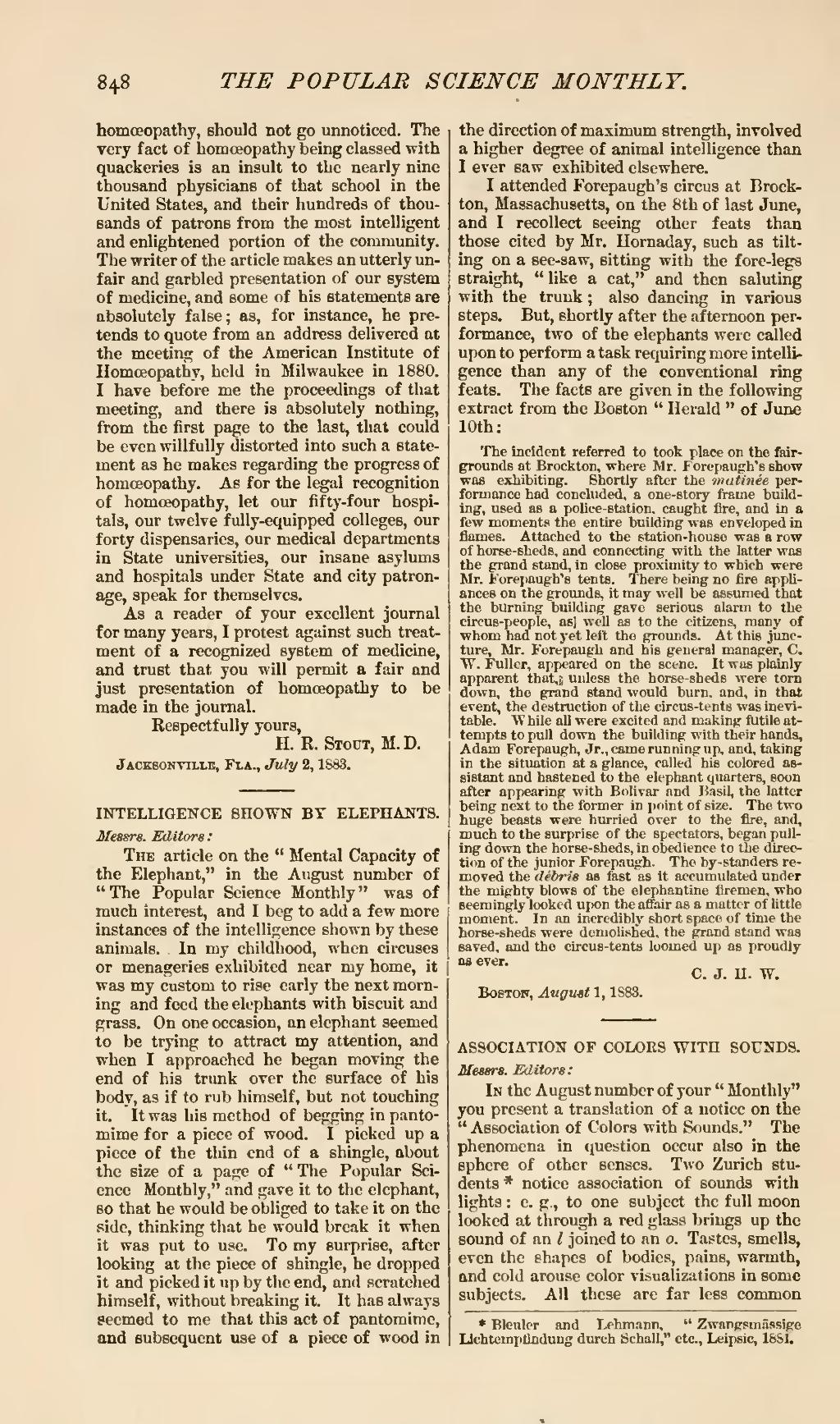homœopathy, should not go unnoticed. The very fact of homœopathy being classed with quackeries is an insult to the nearly nine thousand physicians of that school in the United States, and their hundreds of thousands of patrons from the most intelligent and enlightened portion of the community. The writer of the article makes an utterly unfair and garbled presentation of our system of medicine, and some of his statements are absolutely false; as, for instance, he pretends to quote from an address delivered at the meeting of the American Institute of Homœopathy, held in Milwaukee in 1880. I have before me the proceedings of that meeting, and there is absolutely nothing, from the first page to the last, that could be even willfully distorted into such a statement as he makes regarding the progress of homœopathy. As for the legal recognition of homœopathy, let our fifty-four hospitals, our twelve fully-equipped colleges, our forty dispensaries, our medical departments in State universities, our insane asylums and hospitals under State and city patronage, speak for themselves.
As a reader of your excellent journal for many years, I protest against such treatment of a recognized system of medicine, and trust that you will permit a fair and just presentation of homœopathy to be made in the journal.
Respectfully yours,
| H. R. Stout, M. D. |
| Jacksonville, Fla., July 2, 1883. |
INTELLIGENCE SHOWN BY ELEPHANTS.
Messrs. Editors:
The article on the "Mental Capacity of the Elephant," in the August number of "The Popular Science Monthly" was of much interest, and I beg to add a few more instances of the intelligence shown by these animals. . In my childhood, when circuses or menageries exhibited near my home, it was my custom to rise early the next morning and feed the elephants with biscuit and grass. On one occasion, an elephant seemed to be trying to attract my attention, and when I approached he began moving the end of his trunk over the surface of his body, as if to rub himself, but not touching it. It was his method of begging in pantomime for a piece of wood. I picked up a piece of the thin end of a shingle, about the size of a page of "The Popular Science Monthly," and gave it to the elephant, so that he would be obliged to take it on the side, thinking that he would break it when it was put to use. To my surprise, after looking at the piece of shingle, he dropped it and picked it up by the end, and scratched himself, without breaking it. It has always seemed to me that this act of pantomime, and subsequent use of a piece of wood in thee direction of maximum strength, involved a higher degree of animal intelligence than I ever saw exhibited elsewhere.
I attended Forepaugh's circus at Brockton, Massachusetts, on the 8th of last June, and I recollect seeing other feats than those cited by Mr. Homaday, such as tilting on a see-saw, sitting with the fore-legs straight, "like a cat," and then saluting with the trunk; also dancing in various steps. But, shortly after the afternoon performance, two of the elephants were called upon to perform a task requiring more intelligence than any of the conventional ring feats. The facts are given in the following extract from the Boston "Herald" of June 10th:
| C. J. H. W. |
| Boston, August 1, 1883. |
ASSOCIATION OF COLORS WITH SOUNDS.
Messrs. Editors:
In the August number of your "Monthly" you present a translation of a notice on the "Association of Colors with Sounds." The phenomena in question occur also in the sphere of other senses. Two Zurich students[1] notice association of sounds with lights: e. g., to one subject the full moon looked at through a red glass brings up the sound of an l joined to an o. Tastes, smells, even the shapes of bodies, pains, warmth, and cold arouse color visualizations in some subjects. All these are far less common
- ↑ Bleuler and Lehmann, "Zwangsmässige Lichtemptndung durch Schall," etc., Leipsic, 1881.

